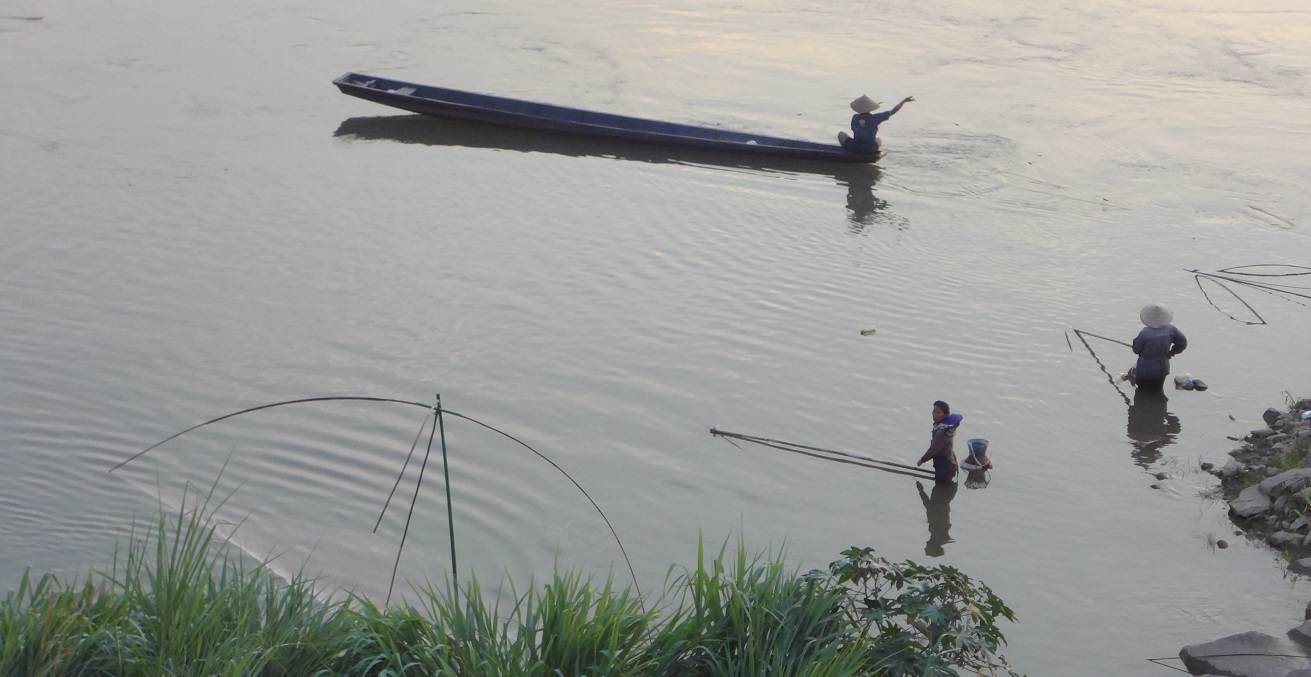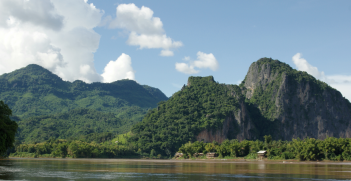25 years of the Mekong River Commission: Looking Back, Looking Ahead

Last week marked the 25th anniversary since Cambodia, Laos, Thailand, and Vietnam signed the Mekong Agreement to develop and protect the Southeast Asia’s most important river, the mighty yet troubled Mekong River. This provides an opportunity to review the historical developments of the inter-governmental organisation, its key challenges and achievements, and look ahead.
Over 90 percent of the world population lives in a country that shares a river basin with others. Freshwater resources are scarce and different nations, actors, and users compete for limited resources in transboundary river basins; often conflicting with each other. The Mekong River is Southeast Asia’s most important river. For millennia, it has supported the rise and fall of empires and is responsible for the livelihoods of over 65 million people who live directly on its riverbanks and rely on the river for food, accommodation, and employment. The river hosts a unique and significant ecological system with some of the world’s highest diversity of fish and snails, including the endangered Irrawaddy dolphin and the giant Mekong catfish. Over the last decade however, the Mekong region has faced growing challenges, including a steady increase in hydropower projects as a result of rapid economic development of the riparian states. The need for cheap and renewable energy is rising, while climate change is increasingly impacting the region.
The Mekong Agreement, whose 25th anniversary we are now celebrating, effectively created the Mekong River Commission (MRC) to develop and protect the Mekong River. This provides an opportunity to review the historical developments of the intergovernmental organisation, its key challenges, and achievements, and to look ahead. This is relevant for Australia, as it has been supporting the MRC, alongside other donor counties, for over two decades.
Looking back
Replacing the Mekong Committee after geopolitical tensions and political turmoil in the Mekong region, the MRC’s mandate focused on multiple-use and mutual benefits of all riparians and to minimise the harmful effects of natural occurrences and human activities. Historically, the MRC has been regarded as relatively successful in mitigating conflicts and maintaining cooperation in the basin. It contributes to international cooperation and notions of regional security by focusing on the implementation of various basin-wide procedures, guidelines, and strategies to develop, manage, and protect the Mekong River. Examples included the Basin Development Plan and the Hydropower Development Strategy.
Adopted by the MRC in 2003, Procedures for Notification, Prior Consultation, and Agreement process (PNPCA) include three different processes that vary on the type of river, season, and scope of use. To date, over 50 projects have been submitted to the MRC and its PNPCA, with five projects being prior consultation cases, including the current process on the Luang Prabang Hydropower Project in northern Laos. Whereas the MRC and its consultation process created some space to share guidelines and regional discussion of large-scale infrastructure impacts, it resulted in mixed outcomes and frustrations by some stakeholder groups. The MRC is criticised as a distant organisation, inaccessible to both NGOs and communities and reluctant to protect weaker states and vulnerable societies from the impacts of development. Although it cannot influence the outcome of the PNPCA process and the decision of the riparian members, the MRC Secretariat is held accountable for the problems and challenges associated with it. As a result, the MRC is seen by many as ineffectual, sidelined by its own member states’ insistence on absolute national sovereignty, and marked by mistrust and miscommunication.
Looking ahead
This puts even more pressure on an already questioned organisation that is challenged by a restructuring process and reduced funding. The restructuring process of the MRC, commonly referred to as riparianisation, is ongoing and was initiated more than a decade ago, based on a review in 2006. Main drivers of the review were developments of mainstream dams on the lower Mekong and increased pressure from the donor community for the MRC to increase its efficiency and effectiveness. Donors wanted the MRC to transition to being a self-financed institution by 2030, highlighting the need to correct flawed governance processes. This process of localisation and decentralisation characterised by restructuring of staffing, budgeting, and programs is currently underway with some achievements so far towards a leaner organisation, a riparian CEO ,as well as an increase in contributions from member countries from 10 percent to almost 40 percent of core funding achieved, with further ongoing goals of self-funding by 2030.
Other recent developments and studies included the Sustainable Hydropower Development Strategy and the Study on Sustainable Management and Development of the Mekong River, including Impacts of Mainstream Hydropower Projects (also called the Council Study), that have been associated with adaptive capacity-building that helps reduce uncertainty and support adaptation in the basin. There has also been some recognition in recent years that the MRC is a regional knowledge hub based on some of its key studies and engagement platforms.
Whereas China and Myanmar have been dialogue partners of the MRC since 1996 and non-binding collaboration has been improving over time, focusing on data sharing, water flow notices, and technical exchanges, it is unlikely that either country will join as a full member in the future, especially as the recently established, Chinese-funded Lancang-Mekong Cooperation (LMC) includes all six riparian countries. Collaboration and possible competition with the LMC and other regional organisations add further uncertainty on the future of the MRC, its mandate, monopoly, and ability to engage a wide range of stakeholders. Other challenges include the ability to respond to new emerging issues and achieve developments from a basin-wide perspective as opposed to national interest-driven initiatives. Addressing these key challenges beside the ongoing riparianisation will be central in guaranteeing another 25 years of the MRC.
Dr Andrea Haefner is a Lecturer at the Griffith Asia Institute who has extensive experience working on transboundary river basins in Southeast Asia, Latin America, and Europe. Besides focusing on impact research and policy relevance, she also worked on several projects on the ground in water resources management and climate change, especially in the Mekong region.
This article is published under a Creative Commons Licence and may be republished with attribution.





